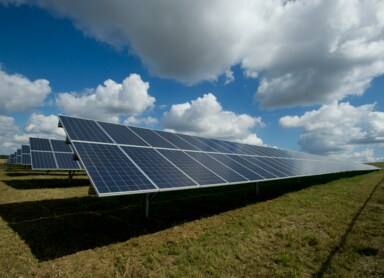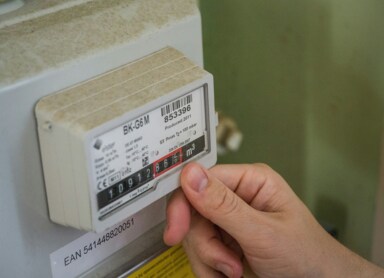What do you need to know about the RED III directive?
On October 18, the Directive of the European Parliament and Council (EU) 2023/2413 was adopted, amending Directive (EU) 2018/2001, Regulation (EU) 2018/1999, and Directive 98/70/EC regarding the promotion of energy from renewable sources, and repealing Council Directive (EU) 2015/652, also known as the RED III Directive. This marks another step in the extensive plans of EU legislators aimed at achieving energy transformation in member states while respecting environmental considerations. What exactly does RED III change, and how can one prepare for it?
RED III Directive – Introduction to Key Changes and Objectives
The RED III Directive is an update of the RED II Directive adopted in 2018. It builds on the concepts from the previous legislation and tightens requirements for EU member states regarding the use of renewable energy in various market sectors. Two key changes define the new directive.
Increased Use of Renewable Energy in Specific Sectors of the Economy
The primary goal is to achieve a 42.5% share of renewable energy in the EU’s overall energy consumption by 2030, with an ultimate target of 45%. Targets for the transport sector have been significantly raised, increasing the required renewable energy usage from 14% to 29% and introducing new sectoral targets.
The directive mandates a minimum of 5.5% usage of advanced biofuels and renewable fuels of non-biological origin (mainly hydrogen and its derivatives). Notably, while renewable or low-emission fuels previously applied only to road transport, they now also cover waterborne and aviation transport.
In industry, the aim is to increase the use of renewable energy sources by 1.6% annually, with 42% of hydrogen used in industry expected to come from renewable fuels of non-biological origin (e.g., e-fuels derived from electricity) by 2030.
The construction sector is also affected. By 2030, 49% of energy used for HVAC systems (heating, ventilation, and air conditioning) must come from renewable sources. Additionally, while RED II required sustainability and greenhouse gas reduction criteria for installations with a capacity of at least 20 MW, RED III lowers this threshold to 5 MW, expanding the range of monitored installations.
Reduced Bureaucracy for Renewable Energy Investments
The second key change in RED III introduces a simplified approval process for projects involving the planning, construction, or operation of renewable energy power plants, connecting them to the grid, and associated networks or energy storage. According to Article 16f of the directive, until climate neutrality is achieved, such investments are presumed to be of overriding public interest and serve public health and safety. This creates a presumption of compliance.
Under the directive, each member state has 30 months to designate "renewable-go-to areas," where project approval should take no more than 12 months. Outside these areas, formalities should be completed within 24 months.
The facilitation measures also apply to obtaining permits for new renewable energy installations (e.g., solar farms) and concluding aggregate PPAs. The previous abundance of administrative hurdles often discouraged businesses from investing in renewable energy due to fears of excessive bureaucratic challenges.
How Does the RED III Directive Impact the EU’s Energy Policy?
The new regulations require member states to dynamically transform their energy production structures. This urgency arises because the timeframe for implementation is relatively short, posing challenges for some countries. For example, although 23 EU nations voted in favor of the directive, the Czech Republic and Bulgaria abstained, while Poland and Hungary opposed it, citing concerns over inadequate infrastructure to meet ambitious goals.
RED III complements the previously adopted Fit for 55 package, collectively charting the course for renewable energy development in Europe. The directive accelerates renewable energy investments by streamlining administrative processes, which could lead to increased competition for agricultural, forestry, or rural biomass pellets and briquettes. At the same time, stricter requirements for biomass origin ensure that materials from high-biodiversity areas are excluded, favoring "good" biomass that may be costlier and less accessible.
By protecting biodiversity and preventing unsustainable bioenergy production, the directive excludes, for example, peatlands, ancient forests, and high-biodiversity primary forests. Forest biomass harvesting must minimize negative soil impacts, adhere to clearcutting thresholds, and preserve biodiversity and habitats. Biomass producers must issue certificates of origin credibility and adjust internal processes to meet new requirements.
RED III - What Does RED III Mean for Businesses?
The implementation of RED III necessitates a gradual shift from traditional energy sources like fossil fuels to renewables. This energy transition is complex and lengthy, requiring incremental steps. Examples of actions that can facilitate local compliance with RED III include installing photovoltaic systems with energy storage or signing PPAs with renewable energy generators.
RED III - Challenges for the Polish Energy Sector
RED III is expected to accelerate the development of renewable energy and make renewable technologies more accessible to smaller businesses. Time will tell whether Poland’s legislature introduces new initiatives to subsidize renewable energy investments domestically in response to the updated goals. Such measures could benefit not only national entrepreneurship but also Poland's standing within the EU.
The directive provides an 18-month window from the date of publication in the EU Official Journal for member states to implement the new rules. Domestic lawmakers must ensure that fuel suppliers meet the new standards but can impose stricter requirements if desired.
The updated rules introduce more stringent criteria that member states must meet to fulfill their obligations to the EU. With limited time to implement changes, businesses that have not yet adopted renewable energy technologies should consider doing so. If you need professional support in planning renewable energy strategies, we’re here to help! Contact us, and together we’ll ensure your development.






